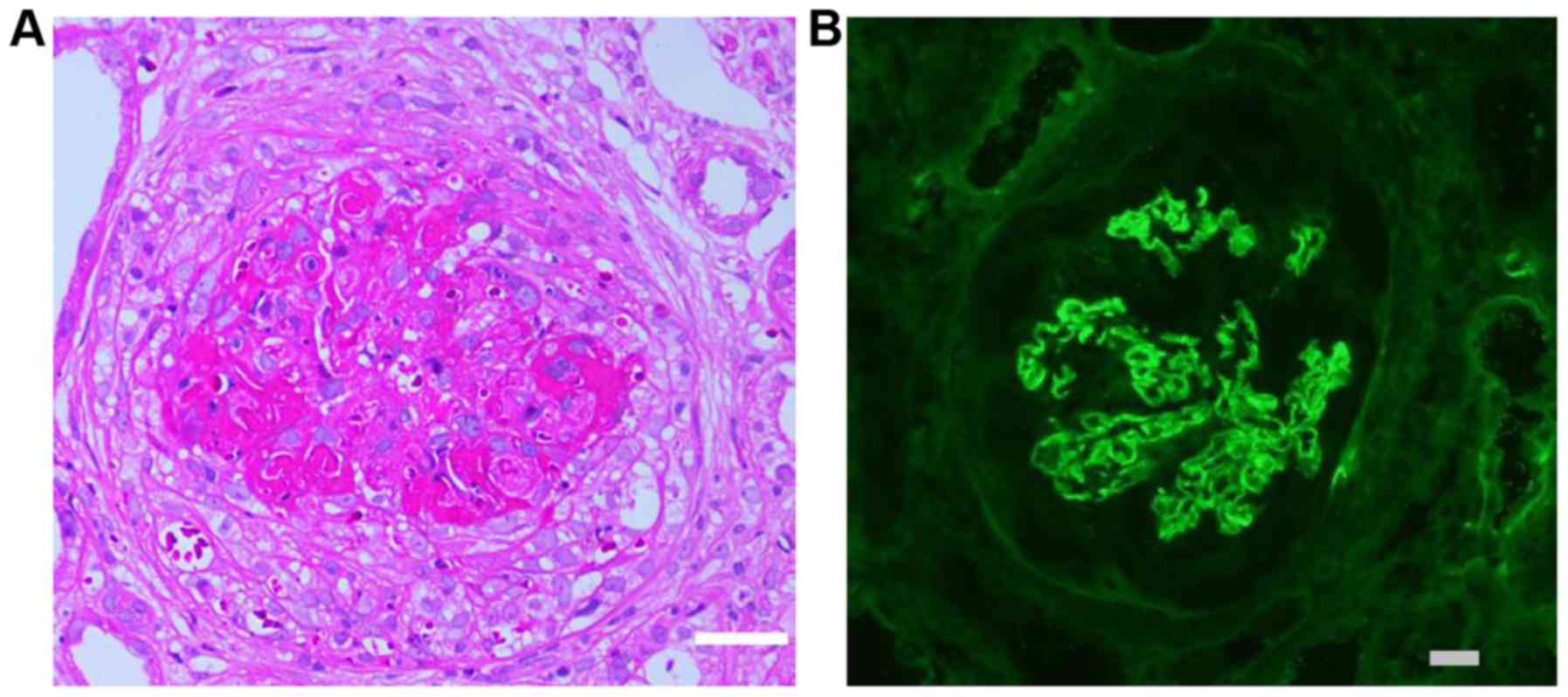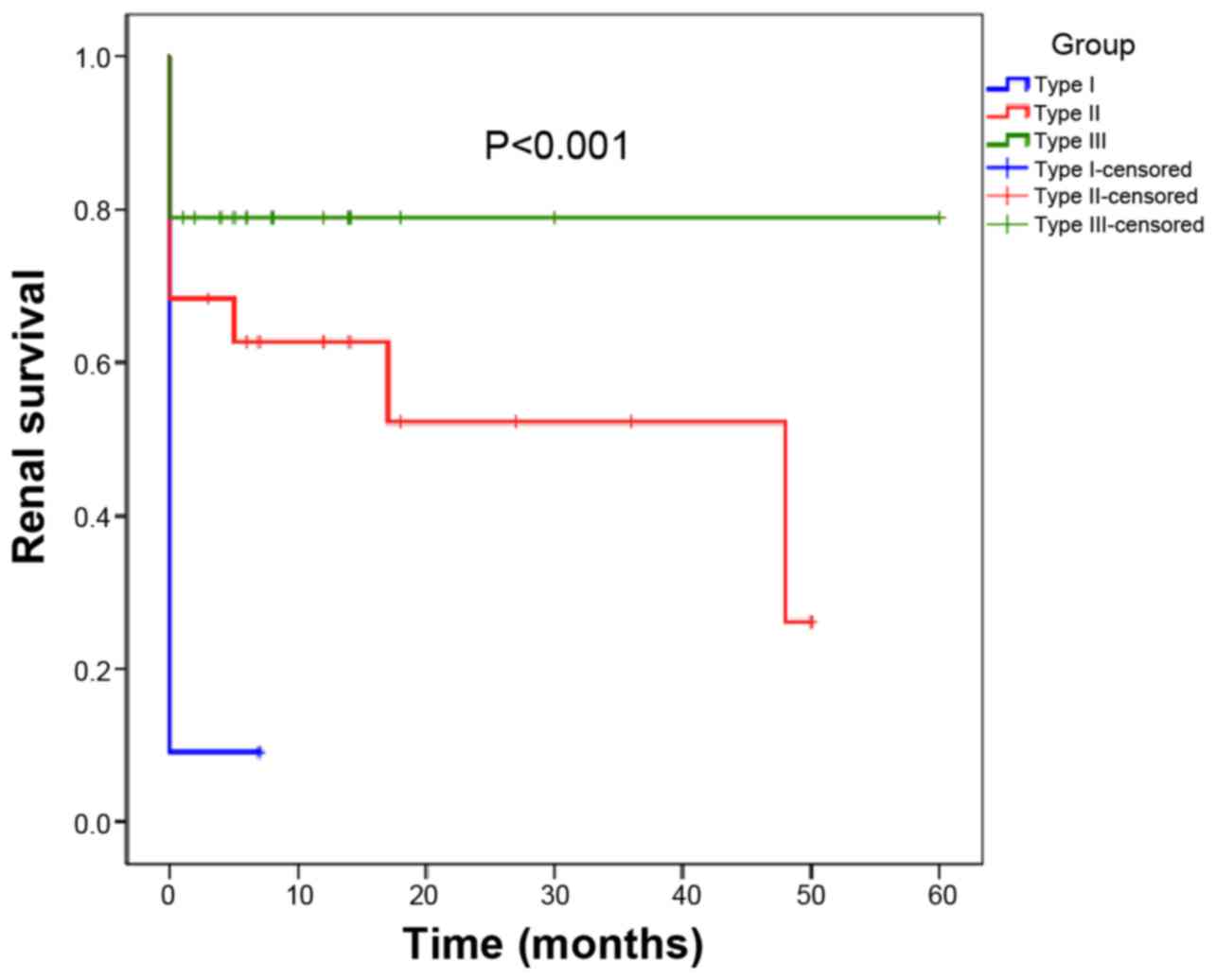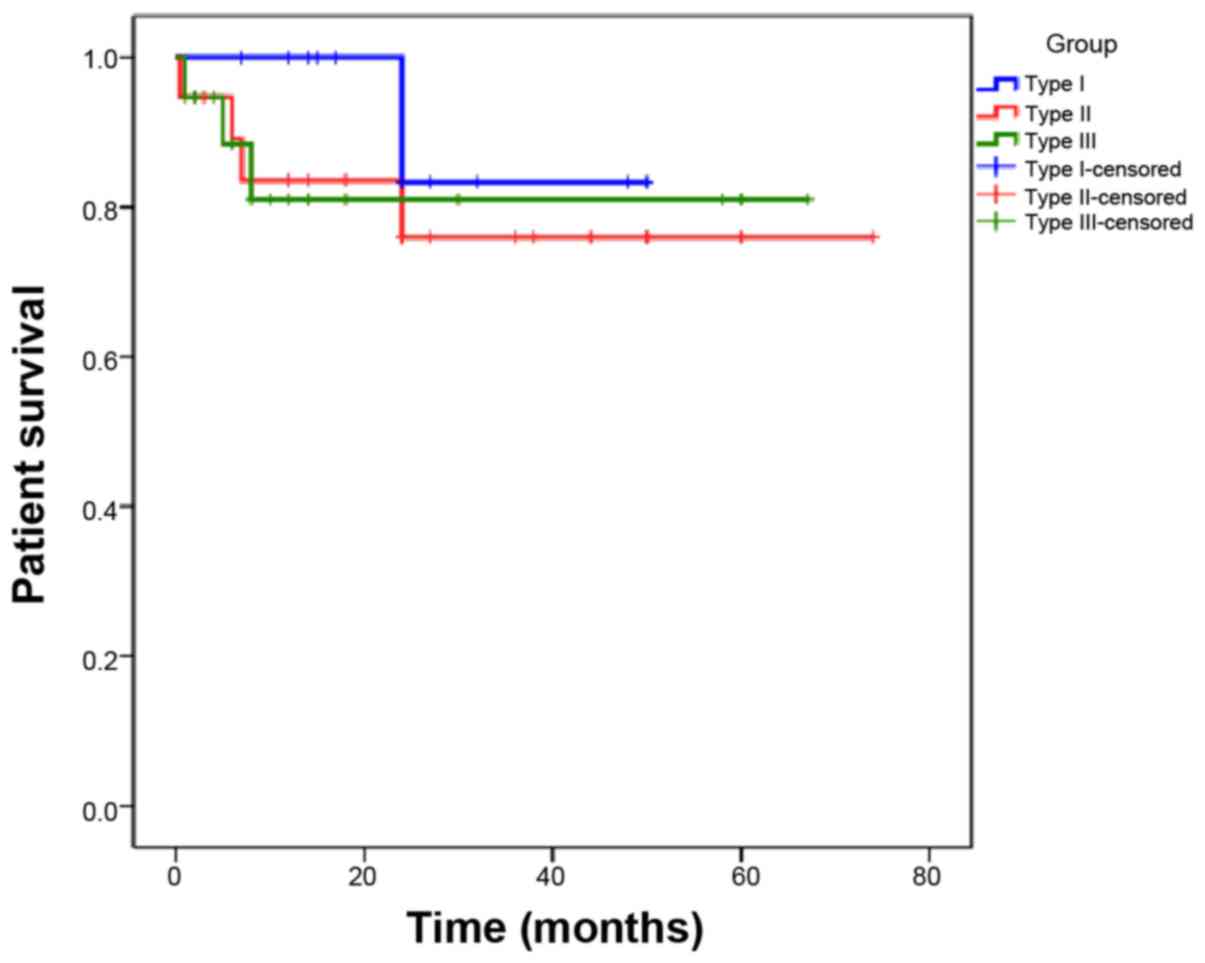|
1
|
Pettersson EE, Sundelin B and Heigl Z:
Incidence and outcome of pauci-immune necrotizing and crescentic
glomerulonephritis in adults. Clin Nephrol. 43:141–149.
1995.PubMed/NCBI
|
|
2
|
Couser WG: Rapidly progressive
glomerulonephritis: Classification, pathogenetic mechanisms, and
therapy. Am J Kidney Dis. 11:449–464. 1988. View Article : Google Scholar : PubMed/NCBI
|
|
3
|
Gupta R, Singh L, Sharma A, Bagga A,
Agarwal SK and Dinda AK: Crescentic glomerulonephritis: A clinical
and histomorphological analysis of 46 cases. Indian J Pathol
Microbiol. 54:497–500. 2011. View Article : Google Scholar : PubMed/NCBI
|
|
4
|
Koyama A, Yamagata K, Makino H, Arimura Y,
Wada T, Nitta K, Nihei H, Muso E, Taguma Y, Shigematsu H, et al: A
nationwide survey of rapidly progressive glomerulonephritis in
Japan: Etiology, prognosis and treatment diversity. Clin Exp
Nephrol. 13:633–650. 2009. View Article : Google Scholar : PubMed/NCBI
|
|
5
|
Oudah N, Al Duhailib Z, Alsaad K, Qurashi
S, Ghamdi G, Flaiw A, Hejaili F, Farooqui M and Al Sayyari A:
Glomerulonephritis with crescents among adult Saudi patients
outcome and its predictors. Clin Exp Med. 12:121–125. 2012.
View Article : Google Scholar : PubMed/NCBI
|
|
6
|
Jennette JC: Rapidly progressive
crescentic glomerulonephritis. Kidney Int. 63:1164–1177. 2003.
View Article : Google Scholar : PubMed/NCBI
|
|
7
|
Lopez-Gómez JM and Rivera F; Spanish
Registry of Glomerulonephritis, : Renal biopsy findings in acute
renal failure in the cohort of patients in the Spanish Registry of
Glomerulonephritis. Clin J Am Soc Nephrol. 3:674–681. 2008.
View Article : Google Scholar : PubMed/NCBI
|
|
8
|
Chen S, Tang Z, Xiang H, Li X, Chen H,
Zhang H, Hu W, Zeng C and Liu Z: Etiology and outcome of crescentic
glomerulonephritis from a single center in china: A 10-year review.
Am J Kidney Dis. 67:376–383. 2016. View Article : Google Scholar : PubMed/NCBI
|
|
9
|
Tang Z, Wu Y, Wang Q, Zeng C, Yao X, Hu W,
Chen H, Liu Z and Li L: Clinical spectrum of diffuse crescentic
glomerulonephritis in Chinese patients. Chin Med J (Engl).
116:1737–1740. 2003.PubMed/NCBI
|
|
10
|
Moroni G and Ponticelli C: Rapidly
progressive crescentic glomerulonephritis: Early treatment is a
must. Autoimmun Rev. 13:723–729. 2014. View Article : Google Scholar : PubMed/NCBI
|
|
11
|
Chen A, Lee K, Guan T, He JC and
Schlondorff D: Role of CD8+ T cells in crescentic
glomerulonephritis. Nephrol Dial Transplant. (pii): gfz0432019.doi:
10.1093/ndt/gfz043 (Epub ahead of print). PubMed/NCBI
|
|
12
|
McAdoo SP and Pusey CD: Anti-glomerular
basement membrane disease. Clin J Am Soc Nephrol. 13:1162–1172.
2017. View Article : Google Scholar
|
|
13
|
Kitching AR and Hutton HL: The players:
Cells involved in glomerular disease. Clin J Am Soc Nephrol.
11:1664–1674. 2016. View Article : Google Scholar : PubMed/NCBI
|
|
14
|
Rovin BH, Caster DJ, Cattran DC, Gibson
KL, Hogan JJ, Moeller MJ, Roccatello D, Cheung M, Wheeler DC,
Winkelmayer WC, et al: Management and treatment of glomerular
diseases (part 2): Conclusions from a Kidney Disease: Improving
Global Outcomes (KDIGO) controversies conference. Kidney Int.
95:281–295. 2019. View Article : Google Scholar : PubMed/NCBI
|
|
15
|
Lin W, Chen M, Cui Z and Zhao MH: The
immunopathological spectrum of crescentic glomerulonephritis: A
survey of 106 patients in a single Chinese center. Nephron Clin
Pract. 116:c65–c74. 2010. View Article : Google Scholar : PubMed/NCBI
|
|
16
|
Xiao C, Xiao P, Li X, Li X, Li H, Chen Y,
Wang Y, Xu Y, Huang G and Zhou Q: Cordyceps sinensis may inhibit
Th22 cell chemotaxis to improve kidney function in lgA nephropathy.
Am J Transl Res. 10:857–865. 2018.PubMed/NCBI
|
|
17
|
Chawla LS, Bellomo R, Bihorac A, Goldstein
SL, Siew ED, Bagshaw SM, Bittleman D, Cruz D, Endre Z, Fitzgerald
RL, et al: Acute kidney disease and renal recovery: Consensus
report of the acute disease quality initiative (ADQI) 16 workgroup.
Nat Rev Nephrol. 13:241–257. 2017. View Article : Google Scholar : PubMed/NCBI
|
|
18
|
Watts RA and Scott DG: Epidemiology of the
vasculitides. Semin Respir Crit Care Med. 25:455–464. 2004.
View Article : Google Scholar : PubMed/NCBI
|
|
19
|
Chen M, Cui Z and Zhao MH: ANCA-associated
vasculitis and anti-GBM disease: The experience in China. Nephrol
Dial Transplant. 25:2062–2065. 2010. View Article : Google Scholar : PubMed/NCBI
|
|
20
|
Canney M, O'Hara PV, McEvoy CM, Medani S,
Connaughton DM, Abdalla AA, Doyle R, Stack AG, O'Seaghdha CM,
Clarkson MR, et al: Spatial and temporal clustering of
anti-glomerular basement membrane disease. Clin J Am Soc Nephrol.
11:1392–1399. 2016. View Article : Google Scholar : PubMed/NCBI
|
|
21
|
Chen M, Cui Z and Zhao MH: ANCA-associated
vasculitis and anti-GBM disease: The experience in China. Nephrol
Dial Transplant. 25:2062–2065. 2010. View Article : Google Scholar : PubMed/NCBI
|
|
22
|
Yuan Q, Wang J, Peng Z, Zhou Q, Xiao X,
Xie Y, Wang W, Huang L, Tang W, Sun D, et al:
Neutrophil-to-lymphocyte ratio and incident end-stage renal disease
in Chinese patients with chronic kidney disease: Results from the
Chinese Cohort Study of Chronic Kidney Disease (C-STRIDE). J Transl
Med. 17:862019. View Article : Google Scholar : PubMed/NCBI
|
|
23
|
Gan L, Li X, Zhu M, Chen C, Luo H and Zhou
Q: Acteoside relieves mesangial cell injury by regulating Th22 cell
chemotaxis and proliferation in IgA nephropathy. Ren Fail.
40:364–370. 2018. View Article : Google Scholar : PubMed/NCBI
|
|
24
|
Peng Z, Wang J, Yuan Q, Xiao X, Xu H, Xie
Y, Wang W, Huang L, Zhong Y, Ao X, et al: Clinical features and
CKD-related quality of life in patients with CKD G3a and CKD G3b in
China: Results from the Chinese Cohort Study of Chronic Kidney
Disease (C-STRIDE). BMC Nephrol. 18:3112017. View Article : Google Scholar : PubMed/NCBI
|
|
25
|
Chen Y, Li H, Xiao C, Zeng X, Xiao X, Zhou
Q and Xiao P: NLRC5: Potential novel non-invasive biomarker for
predicting and reflecting the progression of IgA nephritis. J
Transl Med. 16:3172018. View Article : Google Scholar : PubMed/NCBI
|
|
26
|
Gapud EJ, Seo P and Antiochos B:
ANCA-associated vasculitis pathogenesis: A commentary. Curr
Rheumatol Rep. 19:152017. View Article : Google Scholar : PubMed/NCBI
|
|
27
|
Xiao H, Hu P, Falk RJ and Jennette JC:
Overview of the pathogenesis of ANCA-associated vasculitis. Kidney
Dis (Basel). 1:205–215. 2016. View Article : Google Scholar : PubMed/NCBI
|
|
28
|
Hedger N, Stevens J, Drey N, Walker S and
Roderick P: Incidence and outcome of pauci-immune rapidly
progressive glomerulonephritis in Wessex, UK: A 10-year
retrospective study. Nephrol Dial Transplant. 15:1593–1599. 2000.
View Article : Google Scholar : PubMed/NCBI
|
|
29
|
Hung PH, Chiu YL, Lin WC, Chiang WC, Chen
YM, Lin SL, Wu KD and Tsai TJ: Poor renal outcome of antineutrophil
cytoplasmic antibody negative Pauci-immune glomerulonephritis in
Taiwanese. J Formos Med Assoc. 105:804–812. 2006. View Article : Google Scholar : PubMed/NCBI
|
|
30
|
Yang Y, Luo M, Xiao L, Zhu XJ, Wang C, Fu
X, Yuan SG, Xiao F, Liu H, Dong Z, et al: Exploration of
pathological prediction of chronic kidney diseases by a novel
theory of bi-directional probability. Sci Rep. 6:321512016.
View Article : Google Scholar : PubMed/NCBI
|
|
31
|
Huart A, Josse AG, Chauveau D, Korach JM,
Heshmati F, Bauvin E, Cointault O, Kamar N, Ribes D, Pourrat J, et
al: Outcomes of patients with Goodpasture syndrome: A nationwide
cohort-based study from the French Society of Hemapheresis. J
Autoimmun. 73:24–29. 2016. View Article : Google Scholar : PubMed/NCBI
|
|
32
|
van Daalen EE, Jennette JC, McAdoo SP,
Pusey CD, Alba MA, Poulton CJ, Wolterbeek R, Nguyen TQ,
Goldschmeding R, Alchi B, et al: Predicting outcome in patients
with anti-GBM glomerulonephritis. Clin J Am Soc Nephrol. 13:63–72.
2018. View Article : Google Scholar : PubMed/NCBI
|
|
33
|
Han F, Chen L, Le J, Choong P, Xu Y, Wang
H and Chen J: The clinicopathologic spectrum of rapidly progressive
glomerulonephritis based on glomerular immune deposition and
antineutrophil cytoplasmic antibody. Appl Immunohistochem Mol
Morphol. 23:704–710. 2015. View Article : Google Scholar : PubMed/NCBI
|

















